The most frequents errors harvesting cannabis
List of contents
Of all the pleasant experiences to savour when growing our own cannabis, undoubtedly one of the most special and highly anticipated is the moment we finally take the scissors and cut the plant at harvest time. In many cases this emotion is followed by a great relief, brought on by the tranquility of removing plants, especially outdoor grown plants, which may have been exposed to certain prying eyes.
Situations such as this one, as well as others such as, for example, the grower’s sheer impatience to finish the crop, can lead to bringing forward the harvest and cutting the plants too early, before they reach their optimum maturity. Rushing these things is never a good idea, as haste clouds our judgement and can force mistakes, so the decision about whether to harvest or not will require close observation and patience.
The most common harvesting mistakes are usually to do with to the maturity of the plant, although there are other, less serious errors that can prove decisive to the quality of the harvest, alongside following the proper drying and curing process to ensure a top quality cannabis crop.
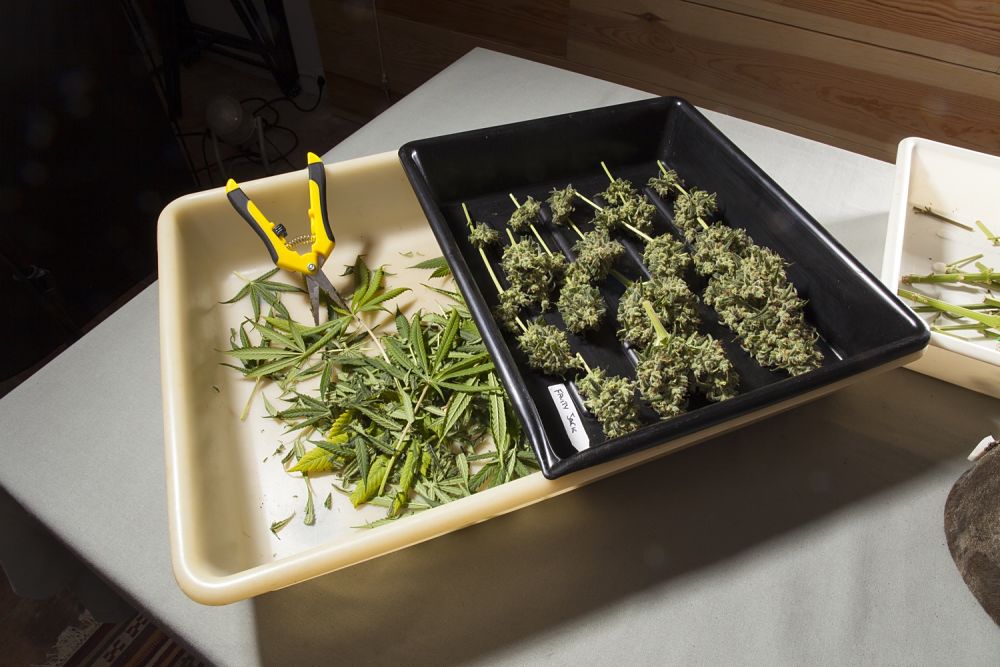
Do you know the flowering time for the cannabis variety you’re growing?
A common mistake is not having enough information about the plant that we’re going to grow. It is essential we know as much as possible about the cannabis strains we cultivate, to be aware of important information such as the vegetative growth, flowering and ripening cycles of the plant. Commercial varieties produced by seed banks will always include the approximate flowering time or harvest date with the general information about the variety.
In the cultivation details of autoflowering strains, the total cultivation time in days is indicated, from germination of the seed to harvest. This total cultivation time is always approximate and tends to be the same for outdoor and indoor gardens, although it must be said that for environmental reasons, depending on the time of the year, outdoor plants may take a little longer to mature than the days indicated in the variety description.
On the other hand, in the cultivation details of feminised photo-dependent varieties the time will differ between indoor and outdoor plants. For indoor-grown cannabis plants, the approximate duration of the flowering period will be given in days, indicating the approximate total time from switching the vegetative growth photoperiod (18/6) to the flowering photoperiod (12/12) until harvest.
In the case of feminised photo-dependent plants grown outdoors, the information given regarding the cultivation time will refer to the approximate dates for harvest. The reason for this difference in the data we’re given for indoor and outdoor crops is because, when grown outdoors, photo-dependent plants are subjected to the different daylight cycles as they change over the seasons, which will determine the time for harvest. Depending on the variety of cannabis plant, in the northern hemisphere these harvest dates are usually between the end of August and late October, while in the southern hemisphere the harvest dates are mostly from late February to the end of April.
Brown pistils on cannabis flowers
One of the things that cannabis growers are most fixated with when deciding when to harvest cannabis plants is in the appearance and colour of the pistils. It is widely believed that when 75-80% of the pistils of our cannabis flowers have turned brown, then they will be mature and ready to harvest.
This assessment may be correct, if it is combined with other indications or signs that the plant gives us regarding its state of maturity. If you rely upon only this one observation, you run the risk of making the mistake of chopping early, as this oxidation of the pistils may be due to environmental factors or the grower’s actions.
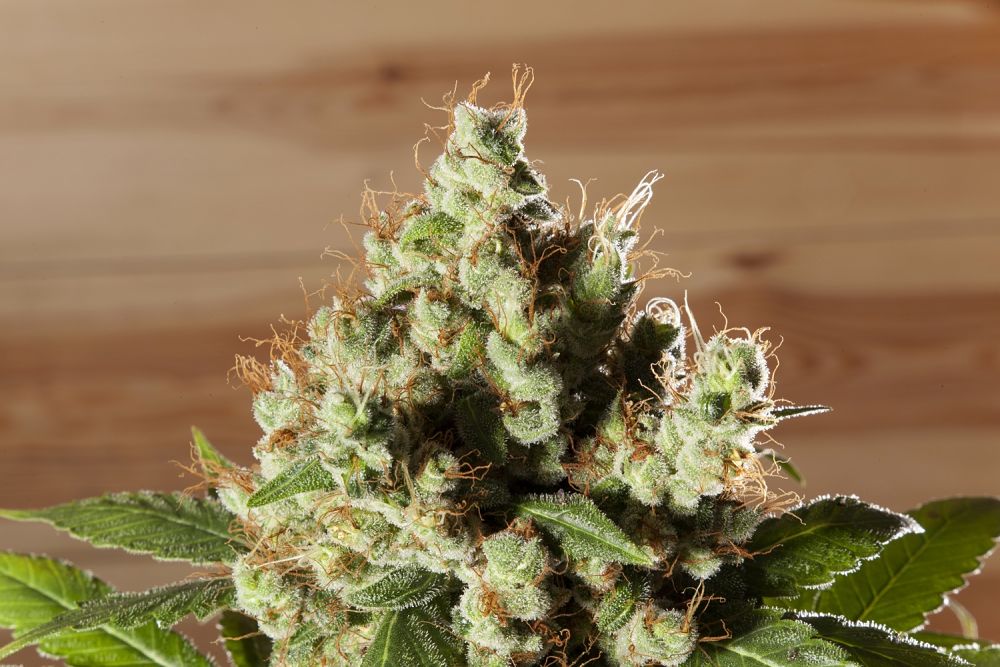
In indoor gardens, sudden shifts in humidity levels, high temperatures or a lack of irrigation can cause the pistils to take on a brown colour. In outdoor gardens, rain and wind can oxidise the pistils prematurely without the plant being mature and ready to cut.
This indication of the brown pistils on cannabis buds must always be combined with other types of observation, in particular the examination of trichome colour.
Checking the trichome heads and the colour of the resin
Trichomes are outgrowths of epidermal origin that occur in many herb, fruit and vegetable plants. Cannabis trichomes are found mainly on the flowers and are mostly of the glandular type. These glandular trichomes generally have a unicellular head where most of the resin of the cannabis plant is concentrated.
The resin secreted by the trichomes takes on a domed shape, similar to a mushroom, allowing us to observe the colour of the resin inside them, which will give us the clearest indication of what stage of maturation the plants are in. To be able to observe these resinous formations properly, you need a microscope or a magnifying glass of at least 5x magnification.
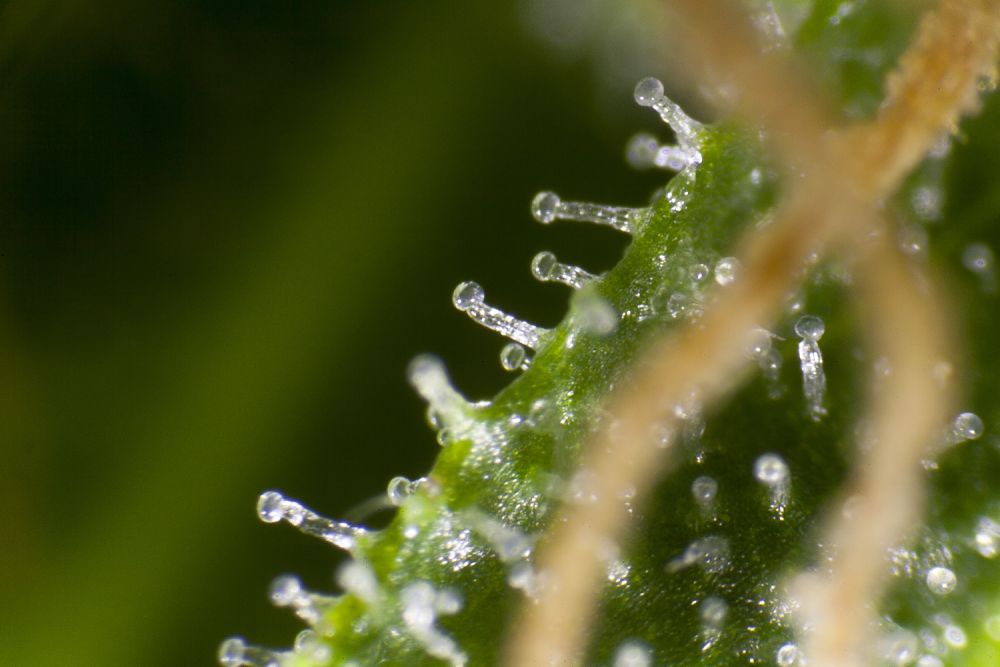
The main clue to recognising the maturity of the plant is by observing the colour of the resin in the trichomes. At first it is transparent, then becoming opaque, later to a milky white color, and finally the resin oxidises and takes on an amber tone.
In a few days, the resin of the trichomes begins to oxidise and take on the typical amber colour which every experienced grower associates with the maturation of the plant. This is the time chosen by most cultivators to cut the plant. In this final phase of maturation the cannabis resin will have a more sensory and relaxing effect.
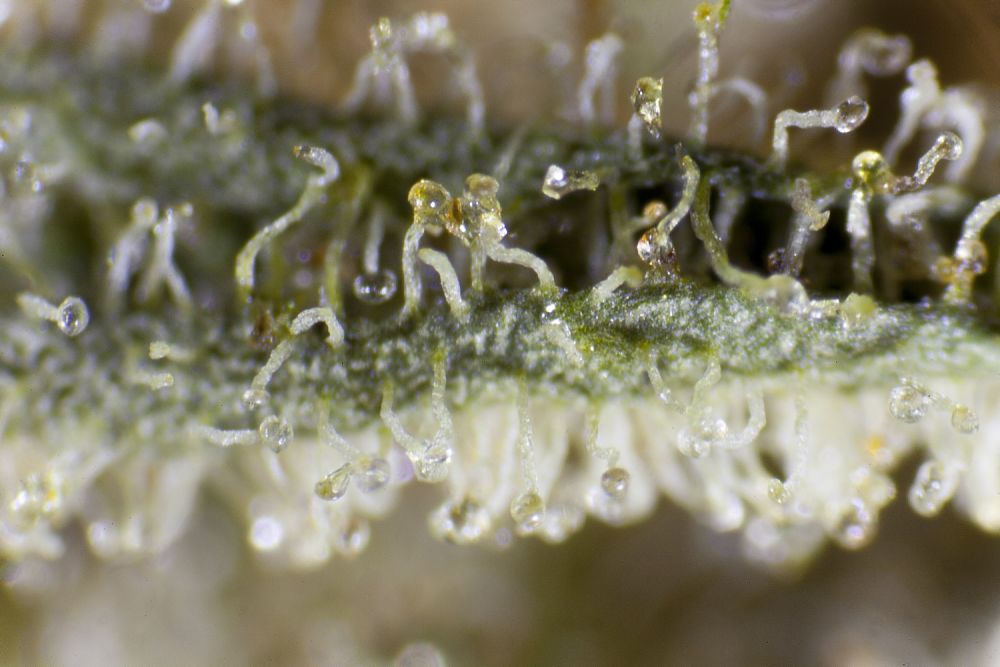
Before harvesting, whether we choose to cut when the resin inside the trichomes is a milky colour, or if we wait for it to oxidise and turn amber, we must always ensure that approximately 75% of the trichomes on the plant are showing our desired colour.
Stop fertilising before cutting
A key step in achieving a high quality crop is to stop feeding the plants by switching to water-only irrigation around 15 days before harvesting. The action of applying nutrient-free water will help eliminate the fertiliser residues and mineral salts accumulated in the substrate during cultivation.
This action, together with a final flushing of roots at the end of flowering, in other words, rinsing the cultivation substrate with abundant plain water and allowing it to drain, will eventually dissolve and wash away not only the nutrient residues, but any remains of insecticide or fungicide treatments applied during cultivation as well. This action helps to avoid these residues reaching the buds, and gives the plant enough time so that it eliminates the accumulation of nutrients through its metabolic processes, thus safeguarding the flavours and the final quality of the resin.
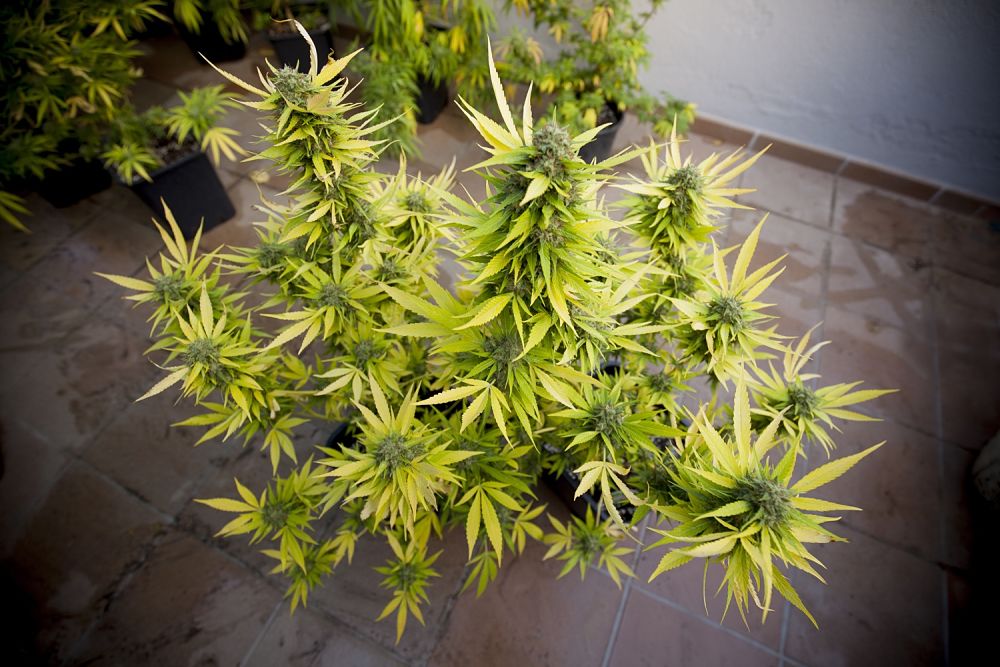
The most visible effect of flushing the roots is the yellow colour gradually taken on by the leaves, starting the bottom and progressing to the top of the plants. The best time to harvest, once we’ve stopped feeding the plants and flushed the roots, is when the lower leaves of the plant have fallen off and those that remain are no longer green but have taken on a yellowish colour.
How to cut cannabis plants down
When we want to harvest our cannabis plants we must differentiate between three types of harvest: chopping the entire plant; cutting off just the branches of the plant; or harvesting only the flowers (buds). If we are dealing with a small or medium sized plant (0.50 meters - 1.50 meters), we can easily harvest the entire plant by cutting through the bottom of the main stem.
To perform this cut, we can use a small handsaw or pruning shears if they are large enough to be able to chop through the stem with relative ease. We won’t have too much of a problem finding a space where a plant of these dimensions can be hung upside down. To ensure proper drying we must remove the large and medium-sized leaves before hanging the plant.
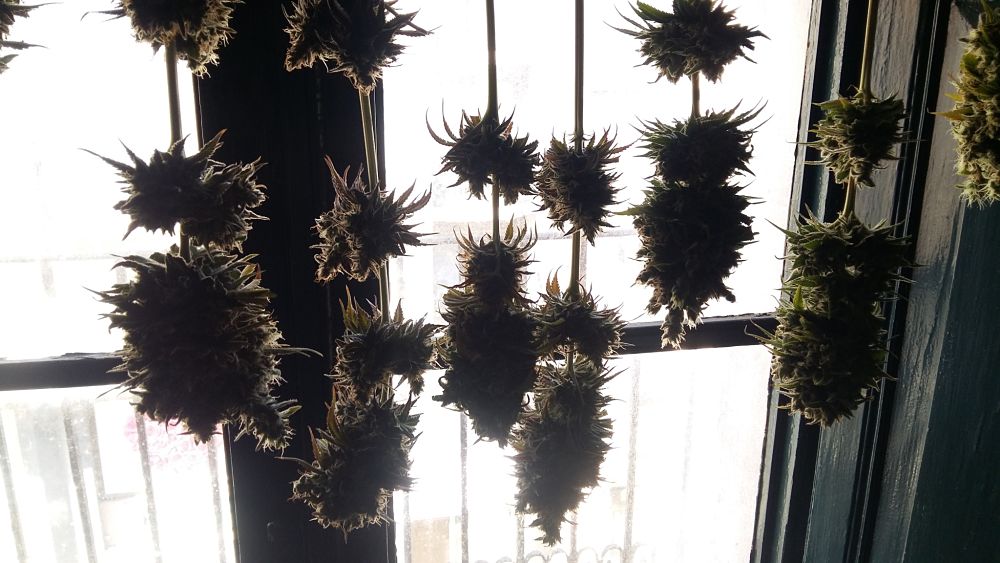
If the plants are large or very large (1.6 metres or more) we will find it more difficult to find a space that meets all the conditions of size and airiness required to properly dry cannabis, so if we want to optimise our drying space, the best option is to harvest the branches one by one, taking care to cut the branches as close to the main stem as possible, and to remove the large and medium-sized leaves before hanging.
The third harvesting option, cutting just the buds, is the most laborious, since we have to go from flower to flower and hurry the trimming process, removing most of the leaves. This type of harvesting has the advantage that as soon as the buds are dry they will already be prepared to go on to the curing and conservation phase, giving us a head start in comparison to the two previous options, in which, once the cannabis is dried, we must then finish trimming and take the flowers off the branches before we can store them.
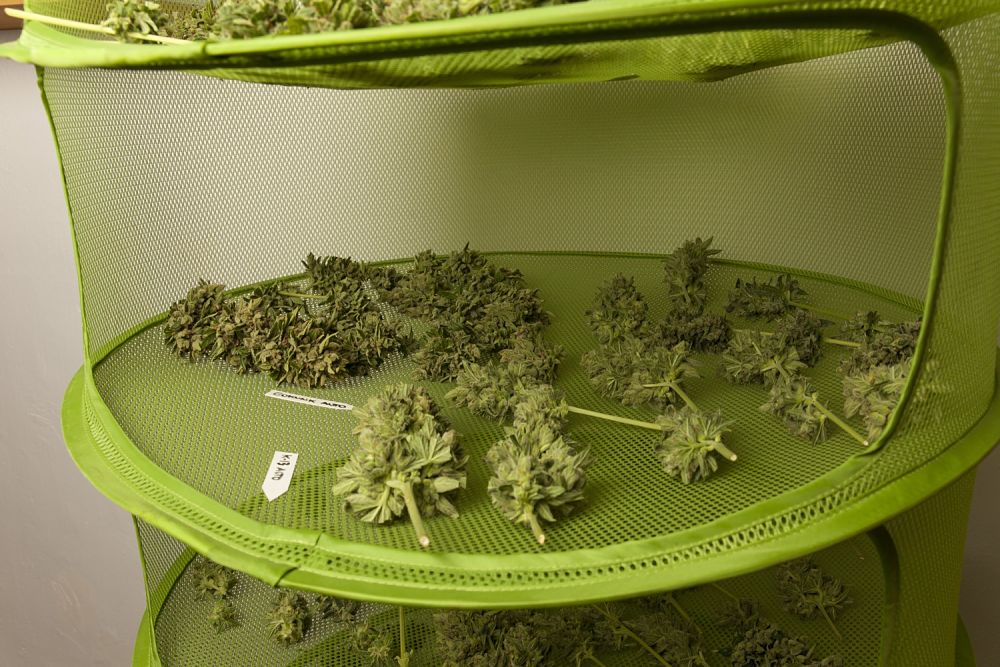
How we do this depends on what kind of plant we’re dealing with. If it’s a small plant then we can cut the buds directly off the plant, whereas with larger plants we will find it easier to remove the branches before cutting the buds off them. Once again, the best tool for this job is a good pair of pruning shears. If we harvest in this way, we must dry the flowers on a mesh screen or other type of suitable dryer. To ensure proper drying, the buds should be placed with care on the screen, well spaced without touching each other.
If we take all the above advice and information into account before we begin to harvest, it’s highly likely that we will end up with a high quality crop of flowers picked at their optimum point of maturity for our enjoyment.
Happy harvesting!








